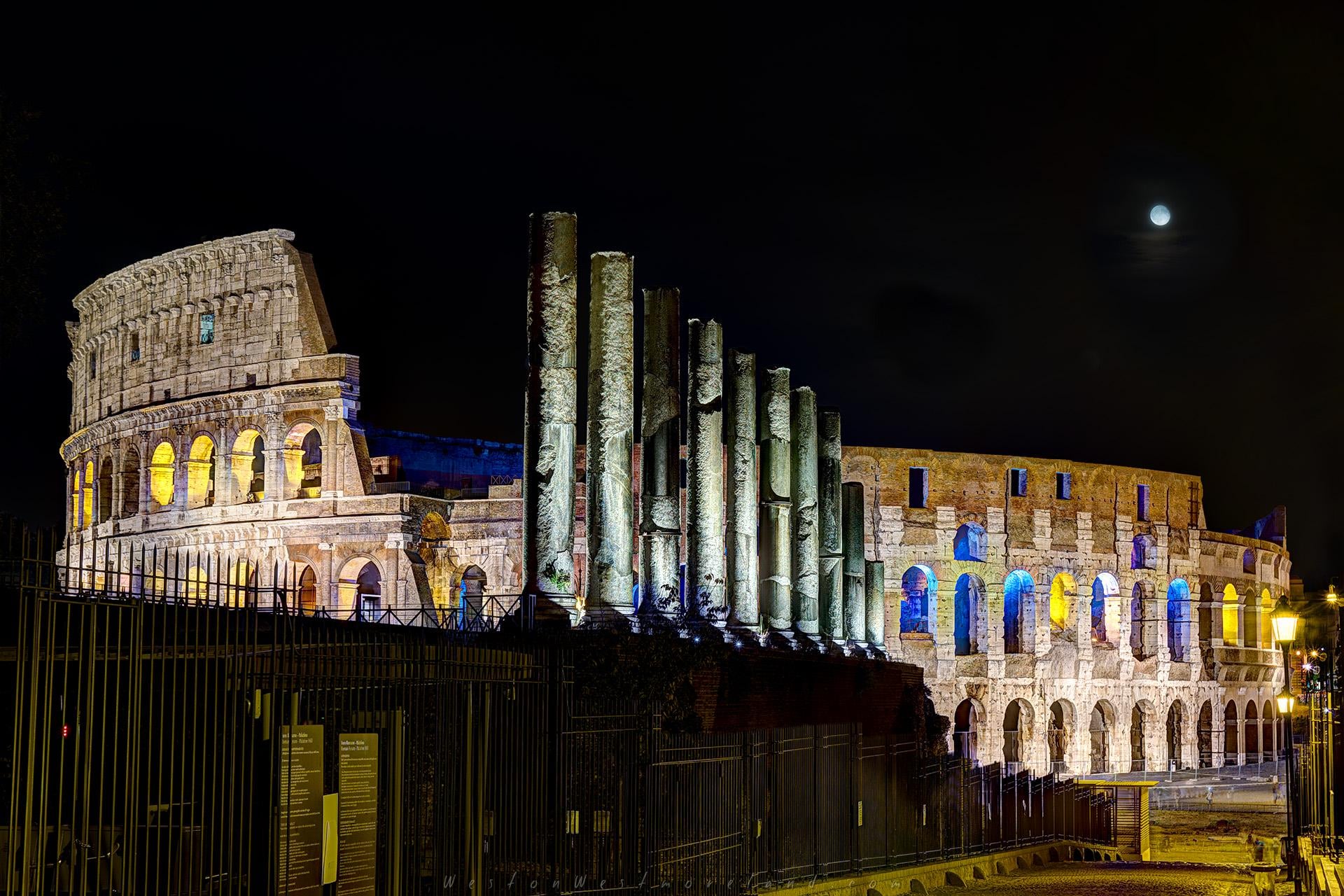
The Colosseum from the Via Sacra, across the columns of the Temple of Venus and Rome. The Via Sacra (Sacred Street) was the main street of ancient Rome, leading from the top of the Capitoline Hill, through some of the most important religious sites of the Forum, to the Colosseum… [1920×1280] [OC]
by WestonWestmoreland

2 Comments
…The Via Sacra (see pavement picture [here](https://www.reddit.com/r/ArtefactPorn/comments/1oe0dy4/the_paving_of_the_via_sacra_rome_coming_from_the/)) is the most important and oldest road axis in the valley of the Forum in Rome, so called, according to one legend, after Romulus and Titus Tatius signed the peace of the war there, caused by the Kidnap of the Sabine Women. Another theory holds that the road took this name because it led from the Rex sacrorum to the Regia, in addition to the fact that many sanctuaries were accessible from it.
During the Regal era, it was a sacred path connecting the Regia, the Comitium, and the Arx Capitolina. The stretch from the Velia to the Regia was called the Sacra Via Summa. The route, monumentalized during the Imperial era, also following various fires, was regularly regularized and perhaps modified in some sections, so much so that even today, the reconstruction of the route of the Via Sacra remains an open question among archaeologists.
The road provided the setting for many deeds and misdeeds of Rome’s history, the solemn religious festivals, the magnificent triumphs of victorious generals, and the daily throng assembling in the Basilicas to chat, throw dice, engage in business, or secure justice. Many prostitutes lined the street as well, looking for potential customers. From the reign of Augustus, the Via Sacra played a role in the Apotheosis ceremony by which deceased Roman emperors were formally deified. The body of the emperor, concealed under a wax death mask, was carried on a pall from the Palatine hill down the Via Sacra into the Forum, where funeral orations were held before the procession of patricians and senators resumed its course to the Campus Martius.
The road was also part of the traditional route of the *Roman triumph* that began on the outskirts of the city and proceeded through the Roman Forum. Later it was paved. During the reign of Nero, it was lined with colonnades.
While the western stretch of the Via Sacra which runs through the Forum follows the original ancient route of the road, the eastern stretch between the end of the forum and the Colosseum, which passes underneath the Arch of Titus, is a redirection of the road built after the Great Fire of Rome in AD 64. In the Republic and Early Empire, the route forked to the north near the House of the Vestals and passed through a saddle in the Velian Hill, now occupied largely by the Basilica of Maxentius and the modern Via dei Fori Imperiali. As part of his rebuilding program following the fire, Nero essentially straightened the road by redirecting it between the Velian and Palatine Hills, creating grand colonnades on either side for shop stalls and commerce. At the east side the temple of Venus and Roma was built under Hadrian and Antoninus Pius.
The name *Via* indicated that the road was originally outside the city, and therefore the Palatine, and that only later was it incorporated into the pomerium (the sacred and inviolable border of the city).
The current pavement dates back to the Augustan era, raised compared to the original one from the regal era. The area crossed by the Via Sacra was used for trade and worship and reclaimed with the construction of the Cloaca Maxima by Tarquinius Priscus or Tarquinius Superbus. The area was chosen by some of the first kings of Rome to build their homes: in addition to the aforementioned Tarquinius Superbus, Numa Pompilius and Ancus Marcius, according to legend, also had a home here. In the Republican era, however, important families lived here, including the Scipios, the Domitii, the Valerii and the Octavians.
In the imperial era it lost its function as a residential area and commercial businesses settled along its sides, which gave way, starting from the 1st century, to monumental buildings such as the Temple of Peace, on whose ruins the Basilica of Maxentius was built in the 4th century, the Temple of Antoninus and Faustina, the Temple of Venus and Roma, which completely occupied the Velia, and the Temple of the Divine Romulus. The Temple of Vesta and the Sanctuary of the Lares and Penates, now lost, also overlooked the street…
As usual, my apologies for inaccuracies and mistakes.
Love seeing that